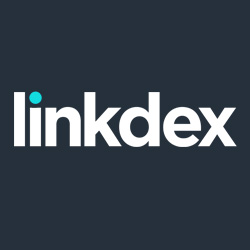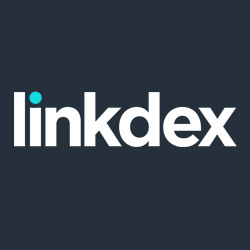In today’s media saturated landscape, the ability to produce campaigns that are memorable is a defining quality for brands. Memorable campaigns have enduring reach, and promote a sense of values that fuel sustained brand loyalty and awareness. So, just as brands and marketers are readying up their Christmas and holiday marketing campaigns, which are a different kettle of fish altogether, Inked takes a look at the most memorable campaigns of 2015, and why they were so impactful amongst consumers.
From the outset, 2015 promised to be a diverse and media-rich marketing year. Key marketing channels and disciplines were identified as a base to be managed and built upon — influencer marketing for example, but also email and big data implementation were marked out for renewed focus, as well as metrics such as customer lifetime value.
While the marketing year is far from over (the Christmas and holiday marketing campaigns of the next few months will likely deserve coverage of their own) so we’ve collected some of the years most memorable campaigns – with memorability in this respect loosely defined by factors such as longevity, impact, and success.
The Most Memorable Campaigns of 2015
1. Always #LikeAGirl — Unstoppable
Always’ original #LikeAGirl campaign first rolled out in July 2014, so it isn’t strictly a campaign from 2015. However on the strength of the original contents runaway success, the brand rehashed the #LikeAGirl campaign with “Unstoppable”, which rejuvenated the concept in July of this year.
https://www.youtube.com/watch?v=VhB3l1gCz2EWith 30 million+ views at the time of writing, Unstoppable shows that the potency of a social advocacy campaign such as #LikeAGirl can hold enduring appeal. There is a tremendous maturity for a brand to align with key social causes of today and to do so with content which can be amplified so well.
Why it was memorable: With #LikeAGirl, Always have succinctly positioned their brand around a cause and social advocacy message that suits them perfectly, igniting audiences across platforms and social media channels. It shows how a great campaign with strong digital penetration can remain relevant for months and even years.
2. Vanity Fair’s Caitlyn Jenner Cover

LGBT issues were one of the breakthrough topics of 2015, and Jenner’s Vanity Fair cover encapsulated a watershed moment. As reported by Lisa Lacy, “according to Bob Witeck, president of PR and marketing firm Witeck Communications, the transgender population has always been a challenge in mainstream media in part because there are so few examples.”
Marketers have a responsibility provide a fair representation of society as they create mainstream media, ethically, but also in order not to alienate niche audiences. And whilst not strictly a campaign, Caitlyn Jenner’s cover shoot represents a move towards open conversation about LGBT issues from brands and publishers alike in the wake of June’s Supreme Court ruling.
Why it was memorable: With brands including JELL‑O, JetBlue, Ben & Jerry’s, Cheerios, Tiffany, and Wells Fargo, producing LGBT themed content, 2015 has been a year in which brands have endeavored to have a voice on topical issues and debate, and to a large extent, have succeeded
3. GoPro — Digda the Skateboarding Cat
The incredible success of GoPro’s marketing strategy has been covered before (and again here), so we won’t dwell on this too long.
Yes, this is a skateboarding cat… but it’s also a genuinely authentic piece of content that originated organically via the community of GoPro users all over the world – a far cry from any big-budget agency brief and ad campaign.
However, what makes GoPro so deserving of yet another mention here is the fact that their marketing strategy utilises user-generated content so perfectly, and that at any moment, any one of these videos can begin to go viral on a major video sharing platform.
This one debuted just last week and is already being widely viewed:
In encouraging and enabling a community of users and advocates to share their own incredible content, GoPro have simply broken the mould. They command a piece of the online video market that in all likelihood can continue to win views and impressions, indefinitely. And with 2015 already a great year for the brand, there’s no reason why 2016 can’t be even better.
Why it was memorable: Authentic, engaging, often downright impressive. Consuming GoPro’s content is widely shared and reported on, and is fast becoming a natural part of the lives of all consumers of digital media.
4. Budweiser USA #BestBuds
Budweiser’s #BestBuds campaign, whose flagship video premiered at Super Bowl 2015 was the standout campaign from this year’s half-time sponsors. Ranking at #1 with 1,907,288 shares on Facebook, Twitter, and blog the first 30 days after the game, the campaign proved that a little melodrama, and a cute puppy can go a long, long way.
In fairness to Budweiser, the ad didn’t solely rely on the “aww” factor of a single rambunctious labrador puppy. The other star of the video was a handsome Clydesdale horse, a breed with who the Anheuser-Busch Brewing Company have a long established history. The video also painted an idyllic picture of American countryside which is consistent for the brand.
Why it was memorable: The standout campaign at this year’s Super Bowl, the campaign had coverage from every possible angle. Is a puppy all it takes? Are we so easily swayed by cute animals? If the campaign had more longevity, it would have been even higher in our list.
5. Netflix — Orange is the New Black, House of Cards, Narcos
Netflix have used 2015 to build further on their brand, and are becoming one of the premier technology brands of today. Like GoPro they have an advantage in that their core product revolves around the provision of great content, and this directly fuels their campaigns.
This year, the brand built upon exclusive and proven properties, such as “Orange is the New Black”, and “House of Cards”, as well as new endeavors such as “Narcos”.
https://www.youtube.com/watch?v=U7elNhHwgBUNetflix’s marketing proposition is essentially based around teasers and trailers of their exclusive content, and the (largely) digital organically driven press coverage. However, what really makes their content memorable is the way in which their company approaches and budgets for productions.
Take Narcos as an example, just as it was announced in 2013 that House of Cards was pretty much guaranteed to be a success amongst audience, having been fueled by big data insights collected from Netflix’s subscribers, “Narcos” was commissioned partly due to the popularity of 30 for 30 documentary “The Two Escobars”. The success of the documentary on the streaming platform was a clear indication of a consumer desire, and Netflix delivered on that.
Why it was memorable: Because that’s what we wanted (apparently). Netflix are continuing to define what modern storytelling and home entertainment are all about. Filmmaking used to exist as an industry of it’s own, but the lines are blurring, and the approach content producers are taking is heavily interlinked with digital marketing principles around user behaviour and data.
6. Domino’s #EasyOrder Pizza Emojis
Domino’s bold announcement that consumers would be able to order pizza with a simple emoji tweet was a powerful statement about the brand’s commitment to simplification of the ordering process. With #EasyOrder, the brand positioned themselves amongst the braver fast food delivery services with a stake in digital innovation (a competitive space with the likes of Arby’s, Taco Bell, and Quiznos also making digital marketing headlines this year).
Why it was memorable: The campaign was the boldest example out of a number of brands who capitalized on the opportunity to market around emojis. If these little symbols represent the zeitgeist of our times, then Domino’s have placed an invaluable stake on what could one day become valuable emoji real estate, and even if not, they showed they are a brand who are ready to capitalize on digital opportunities when and if they arrive.
7. Nordstrom Goes ‘Big’ For Anniversary Sale

We highlighted Nordstrom at the beginning of this year as one of the most innovative brands in terms of the way they utilize integrated technology to unite business objectives, and this is a concept that fuels some of their powerful and integrated digital marketing campaigns.
Earlier this year, they created a gigantic installation on the top of their flagship store, which was used to create a single Instagram post to announce their annual anniversary sale.
The company also used emerging technology platforms such as Periscope to broadcast the creation of the huge piece, ensuring the event was well placed to reach audiences across digital channels.
Why it was memorable: The perceived ease with which Nordstrom is able to consistently oust their competition by creating unique digitally-savvy content is fast positioning the brand as one of the most modern, innovative, and popular department stores among young audiences and digital natives.
8. Disney Characters Surprise Shoppers
With 4.7+ million views (at time of writing), Disney’s stunt utilizes the power of a well-coordinated offline stunt that engages members of the public, and amplifies that experience across digital channels.
Following on from the success of hugely popular campaigns such as WestJet’s Christmas Miracle, the video shows how this kind of marketing radiates qualities of authenticity and positive feelings which enhance audience perceptions of a brand.
Why it was memorable: The video shows how the wonder of a well-coordinated offline stunt can travel much further than the people you amaze, with the amplification of offline channels.
9. Burberry’s Periscope Runways

In recent years, Burberry’s digital transformation has been well covered. In many respect they are one of the foremost brands in a industry which has wholeheartedly embraced the potential and opportunity of digital and technology. As reported on percolate, fashion brands have realized that “it’s crucial to integrate technology into every customer touchpoint, both online and offline”.
Burberry’s Periscope runways used the platform to create a visceral experience for audiences, that essentially brought their flagship content exhibition (traditionally somewhat of an exclusive event) to all. The move, which was also complemented by activities on relevant platforms such as snapchat, delivered a record number of impressions, topping 100 million and subsequently “the best [results] we’d ever had in terms of digital engagement” according to Burberry CFO Carol Fairweather.
Why it was memorable: The campaign exhibited the perfect marriage between digital technology and an experiential and exclusive brand experience. The resulting number of impressions and level of digital engagement simple speak for themselves.
10. Microsoft #CollectiveProject — “Robert Downey Jr. Delivers a Real Bionic Arm”
Last but certainly not least, Microsoft’s #CollectiveProject is a fantastic example of a brand who are bringing social corporate responsibility to life, and this video featuring “Iron Man” Robert Downey Jr. shows how this can be translated into a impactful marketing function.
Microsoft’s commitment to the #CollectiveProject, a charitable cause revolving around genuine technological innovation, is a feature of the world’s most advanced tech brands, but this campaign is an example of how that can generate positive sentiment amongst wide audiences by harnessing the power of emotional storytelling.
Why is was memorable: Microsoft’s #CollectiveProject demonstrate a highly mature kind of marketing which is based around charity, and an authentic commitment to corporate social responsibility. The popularity of this video shows how that kind of commitment can be highly endearing to audiences.
Final Thoughts
This is by no means a definitive list of the year’s best campaigns, but it is a selection of some of the most memorable.
What’s interesting is how many of the brands are highly recognizable in that they are the same ones that consistently perform well with their digital marketing campaigns. Nordstrom, GoPro, and Burberry, for example, are well known to be some of the leading digital innovators in their respective industries.
It shows that only brands that are set up to be digitally-savvy on all fronts, able to exhibit a sense of authenticity and responsiveness in the creation of their campaigns, have a clear advantage, and are able to generate truly memorable campaigns.




